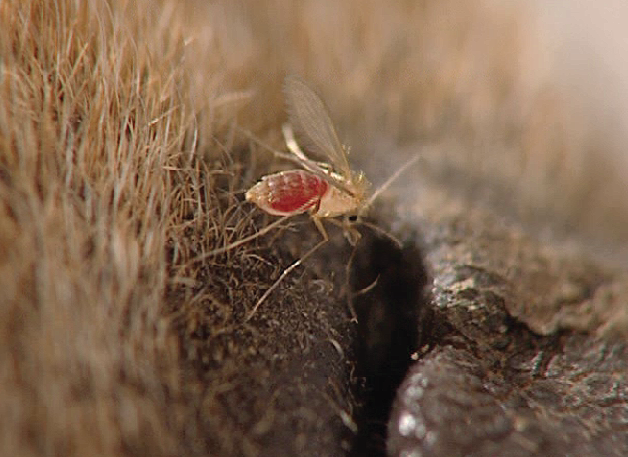Prevention for individual dogs should always include use of a topical insecticide maintained throughout the period of sand flies activity. Additionally, vaccination should be considered as a part of a multimodal approach*.
Only insecticides that have been approved by the formal approval body should be use for the prevention of CanL.
Topical insecticides applied to dogs living in or travelling to endemic areas should be maintained during the entire period of potential exposure to sand flies:
- Spot on formulations
Treatment with permethrin spot-on formulations may provide a re pellent (anti-feeding) activity against sand flies for 3-4 weeks. In the case of dogs travelling to endemic areas, the product should be applied at least 2 days before exposure. - Collars
Deltamethrin-impregnated collars prevent phlebotomine sand fly bites. The efficacy of this collar preventing Leishmania infection has been demonstrated in several field trials.
The duration of efficacy of this collar is up to 12 months.A flumethrin-containing collar, with proven repellent efficacy against sand flies, has shown in clinical field studies a reduction of the risk of infection with L. infantum transmitted by sand flies for up to 8 months.
All the collars should be applied at least 1-2 weeks before exposure.
*Based on a risk-benefit assessment from endemic areas, a multimodal approach combining repellent use and vaccination should be considered for optimal prevention against both infection and development of clinical disease. Repellents highly reduce the risk of infection but do not prevent the appearance of clinical signs once the dog has been infected. Vaccination reduces the risk of disease progression and the probability of clinical signs developing but does not prevent infection.
Preventative recommendations based on different level of risk for L. infantum infection (Miró et al., 2017)
| NON ENDEMIC AREAS | ||||
| Level of risk (0 low – 4) |
Travel History | Lifestyle | Preventative Applications | Additional Recommendations |
| 0 | Local (negligible) | Any | None | Avoid breeding with or blood transfusion from dogs belonging to risk levels 3-4 and PCR positive or seropositive dogs (and 1-2, if possible) |
| 1 | Occasional travel to fringe or endemic areas | Any | Repellents: Cover the entire period of travelling/exposure including the delay for activity | See risk level 0 If travel once for less than 3 weeks, use topical insecticide spot-on formulations applied at least 2 days before exposure. For longer periods of travel, use repeated spot-on or collars. Test for L. infantum infection 6 months after travel (by quantitative serology) |
| 2 | Frequent/long travel to fringe or endemic areas | Any | Repellents: Cover the period of travel including the delay for repellent activity Vaccination (optional) |
See risk level 0 For long and/or frequent trips preventative and additional recommendations should be the same as for risk level 4. Test for L. infantum infection 6 months after last exposure (by quantitative serology) Domperidone could be considered (if not vaccinated) |
| 3 | Re-homing from an endemic area | Any | See additional recommendations | Test for L. infantum infection via quantitative serology. If positive, do not breed and do not use as blood donor, consider treatment (see staging). Repellents all year round. Testing of other household dogs |
| ENDEMIC AREAS | ||||
| Level of risk (0 low – 4) |
Serology Results (IFAT/ELISA) | Lifestyle | Preventative Applications | Additional Recommendations |
| 4 | Seronegative | Outdoors (high exposure) | Repellents all year round or during the known sand fly transmission season. Vaccination (strongly recommended) |
Domperidone could be considered (if not vaccinated) Periodic testing (by quantitative serology) if breeding or blood donor (at least once a year) |
| 4 | Seronegative | Indoors (low exposure) | Repellents all year round or during the known sand fly transmission season. Vaccination (optional) |
Domperidone could be considered (if not vaccinated) Periodic testing if breeding or blood donor |
| None applicable | Seropositive (Healthy*/Sick**) | Any | Repellents all year round | Do not use for breeding or as blood donor Staging for treatment as needed Test other household dogs |
*Healthy: a dog without any clinical sign or clinicopathological abnormality
**Sick: a dog with clinical and/or clinicopathological abnormalities

Female Phlebotomus perniciosus feeding
on the muzzle of a dog (© Guadalupe Miró)
